现代法治观念从何而来? ——探访《大宪章》的历史封印地
《大宪章》(原拉丁语:Magna Carta;英语:The Great Charter)最初封印(国王的封印,即得其认可)于1215年,距今已超过800年,是现代法治观念的基础。事源主要是,当时的英格兰国王约翰(King John)施政无道、滥用权力(那时有多黑暗?据说,在约翰死后,当时的编年史家Matthew Paris写道:「black as is Hell, John's presence there makes it blacker still」),使在其辖下众等封建贵族(Baron)大为不满,最终联合起来对抗之,而结果就是迫使国王约翰同意《大宪章》中的条款,用以规范国王的权力,使其不能任意妄为。
当然,历史是复杂的,《大宪章》的发展、执行和影响亦渡过了不少风浪、起起伏伏的不同阶段。例如,创作于三百几年后的莎士比亚,在其关于国王约翰的作品里,就完全没有提及《大宪章》;是什么原因呢?我参考的资讯给我的印象是,似乎在莎士比亚的时期,《大宪章》不见得受到重视。 (但会否另有原因就有待考究了。)
无论如何,《大宪章》中包含现代自由、人权、法治等理念的初形,深深影响着后来的发展,美国的《独立宣言》、联合国的《世界人权宣言》便是受其影响的经典例子。与该些理念初形相关的《大宪章》条款例如有( Runnymede and Magna Carta ,2019,The National Trust):
- The English Church shall be free, and shall have its rights undiminished, and its liberties unimpaired (Clause 1)
- The City of London shall enjoy all its ancient liberties and free customs (Clause 13)
- Earls and barons shall be fined only by their equals, and in proportion to the gravity of their offence (Clause 21)
- No free man shall be seized or imprisoned ... except by the lawful judgement of his equals or by the law of the land (Clause 39)
- To no one will we sell, to no one deny or delay right or justice (Clause 40)
我自己特别欣赏和感兴趣的是,那段国王约翰和封建贵族冲突的历史,为何会衍生出《大宪章》——算是较文明地处理冲突的方法吧——而并非简单直接的武力冲突,导致血流成河、生灵涂炭?整件事是如何发生的?有什么前因?谁起着关键的作用? ⋯⋯
做了以上的简介,我们可以看看照片了。
英国的Runnymede是《大宪章》的历史封印地,是那些封建贵族迫使国王约翰同意其条款的地点,现在设有英国National Trust的景点,最重要的固然是纪念《大宪章》的景点,是一个在1957年由The American Bar Association设立的纪念碑,上面刻上的字是:「TO COMMEMORATE MAGNA CARTA」和「SYMBOL OF FREEDOM UNDER LAW」。
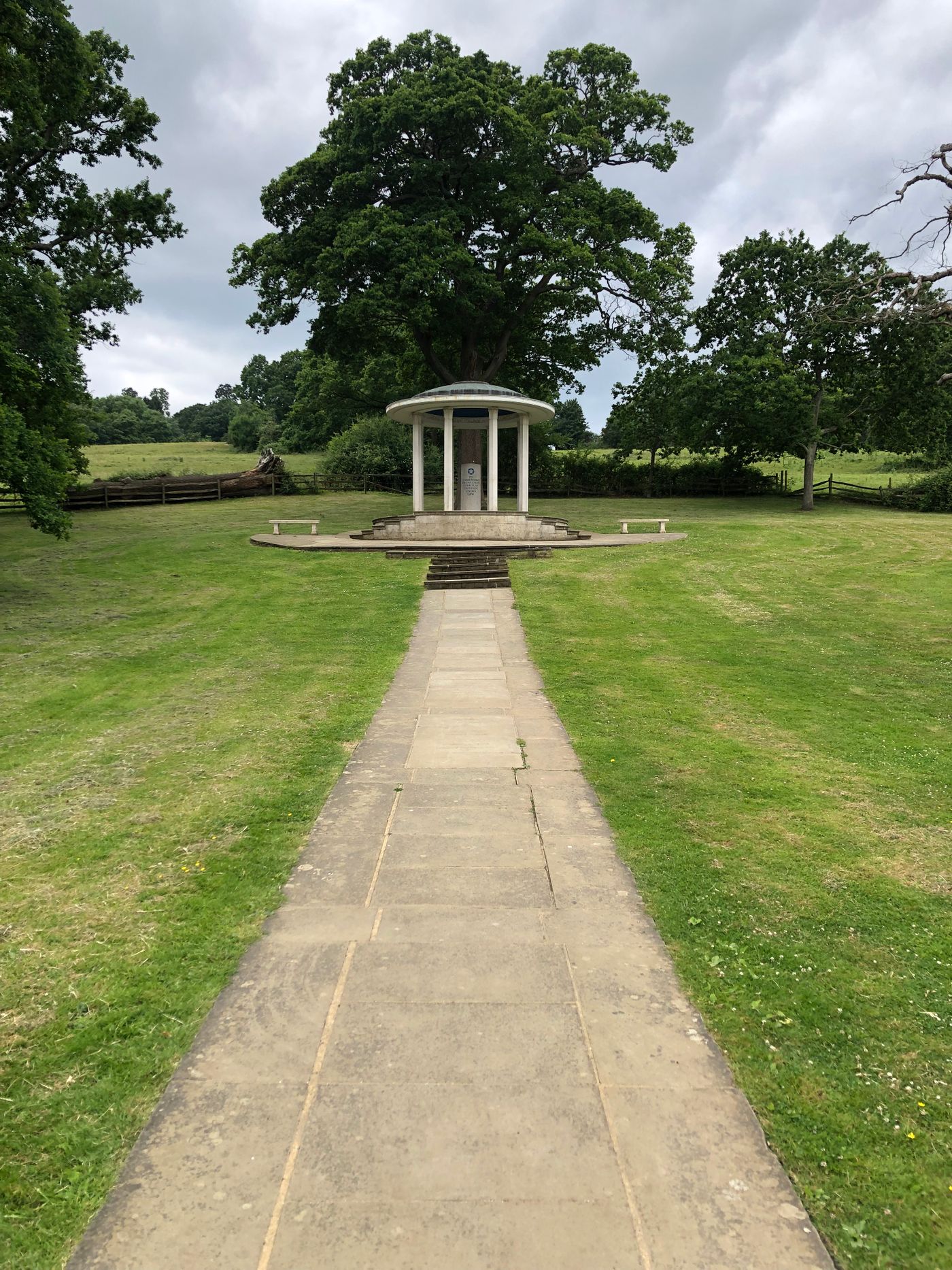
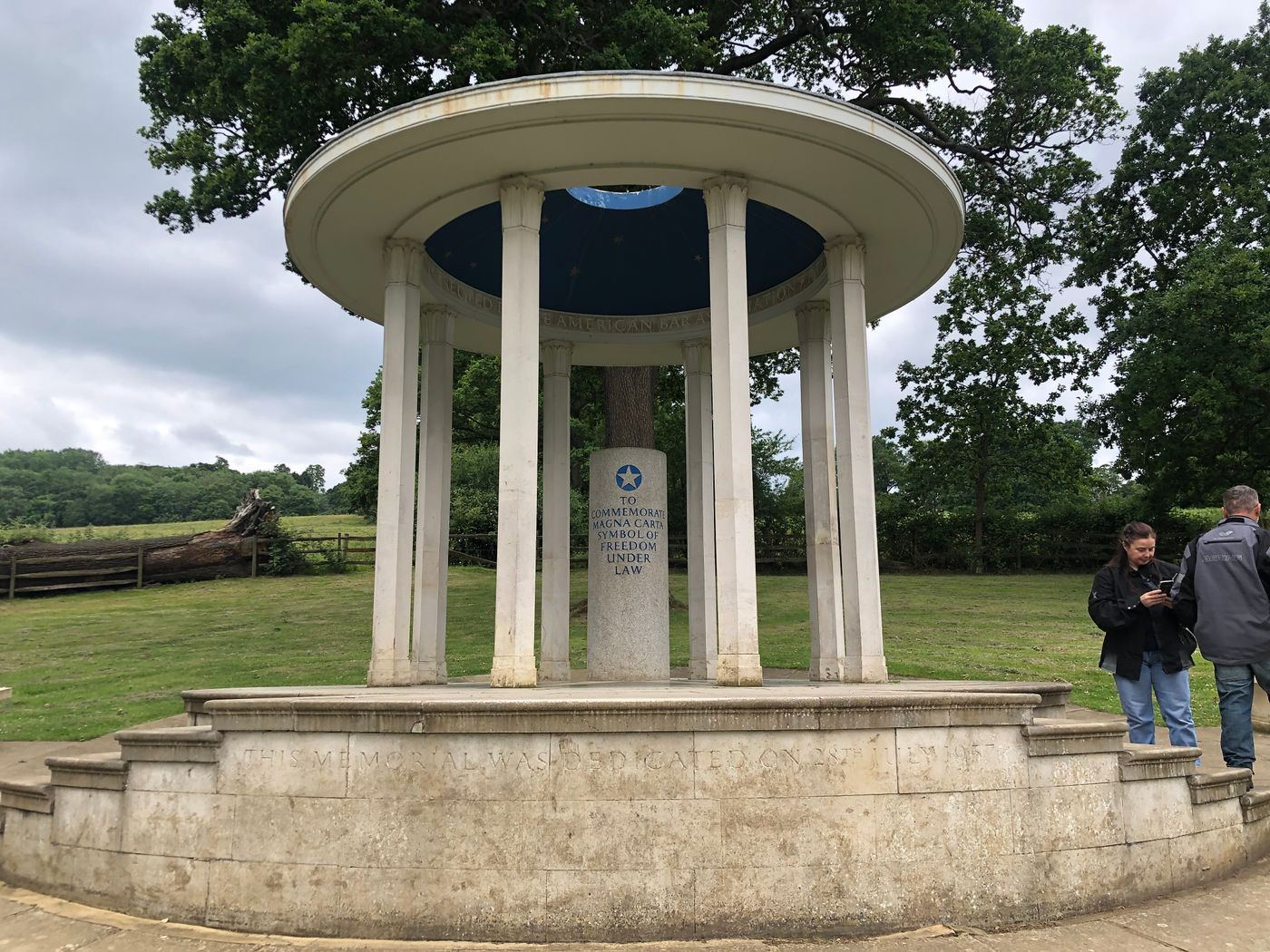
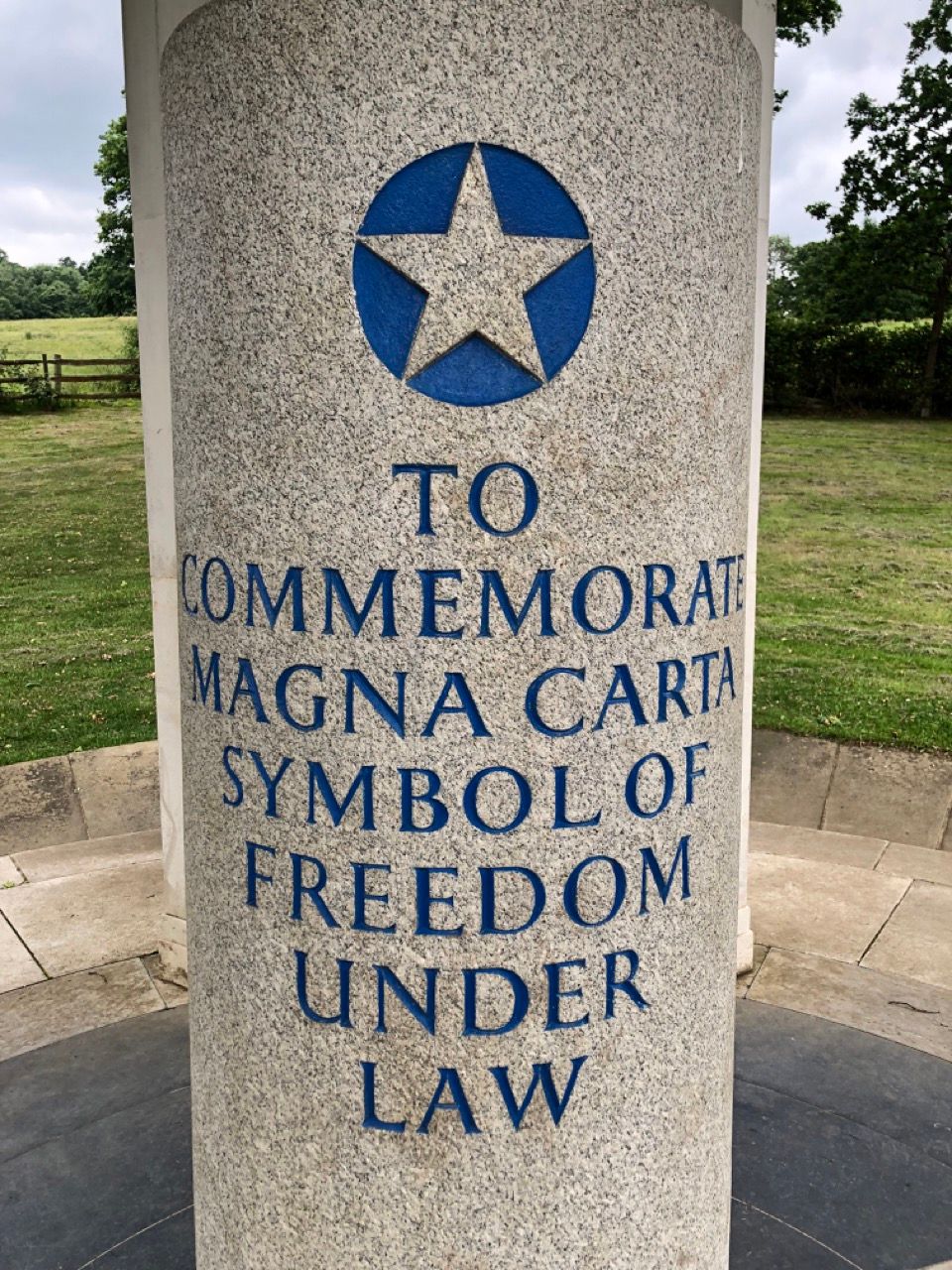
自1957年至今,The American Bar Association 四次回来重申他们坚守《大宪章》精神——以法治捍卫自由——的承诺。
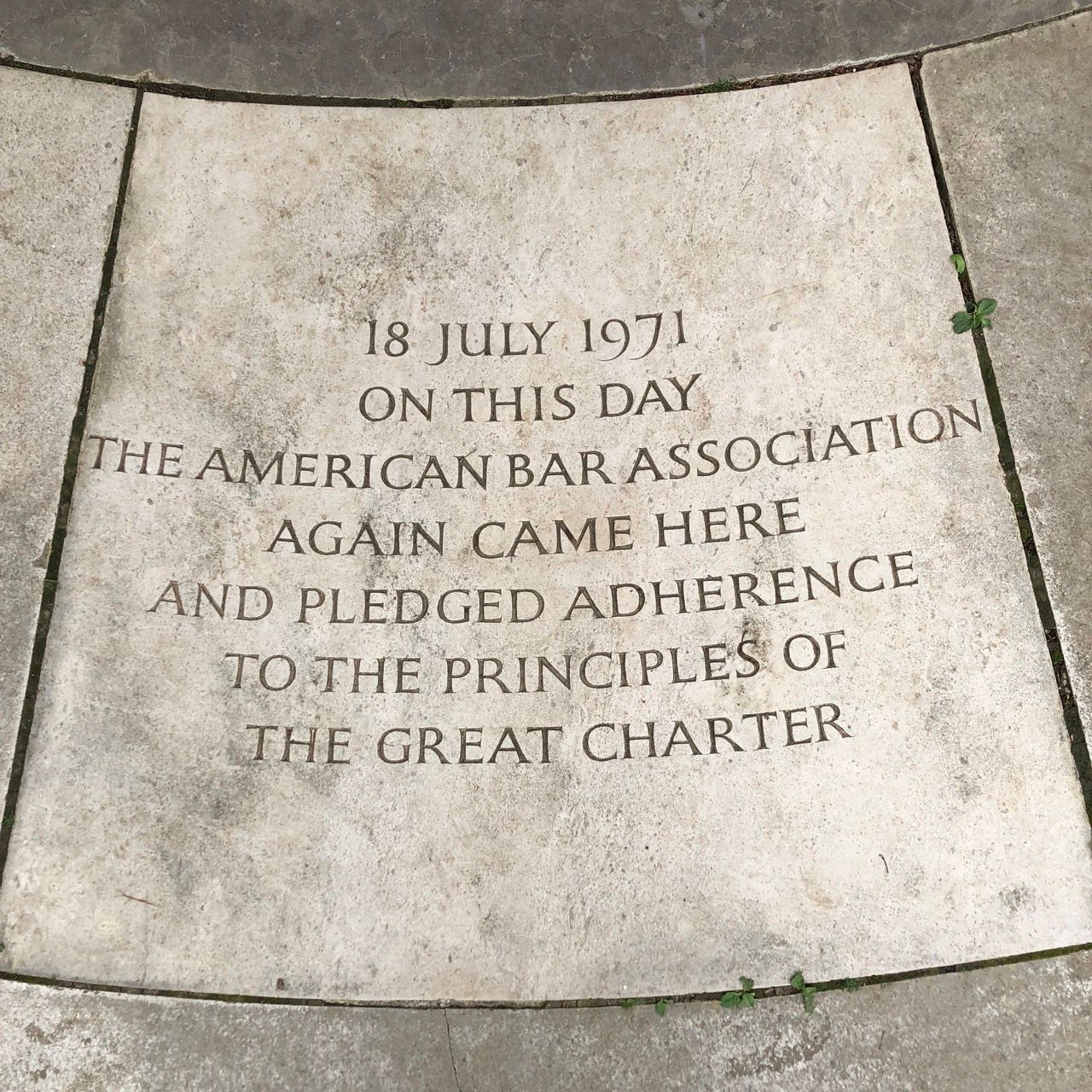

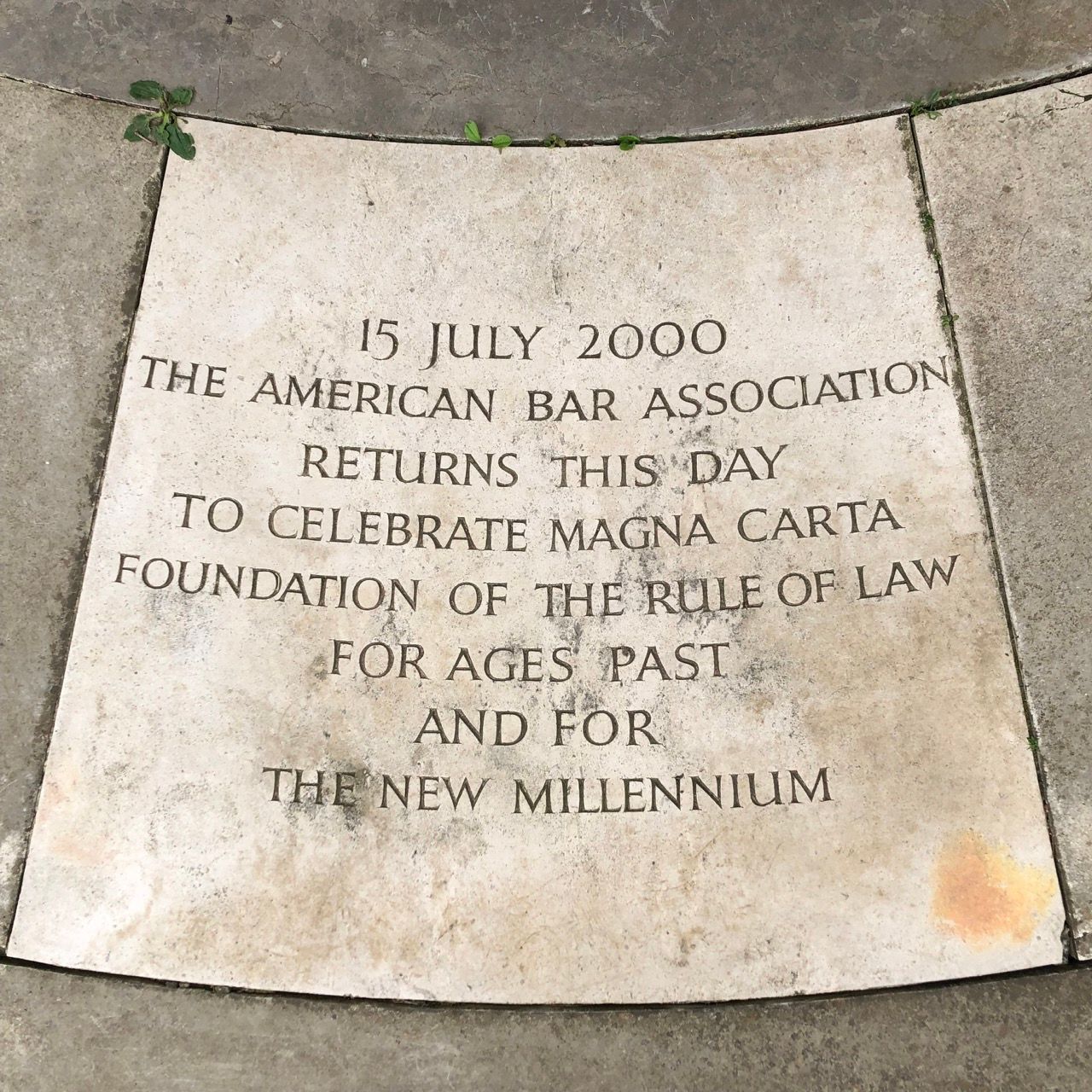
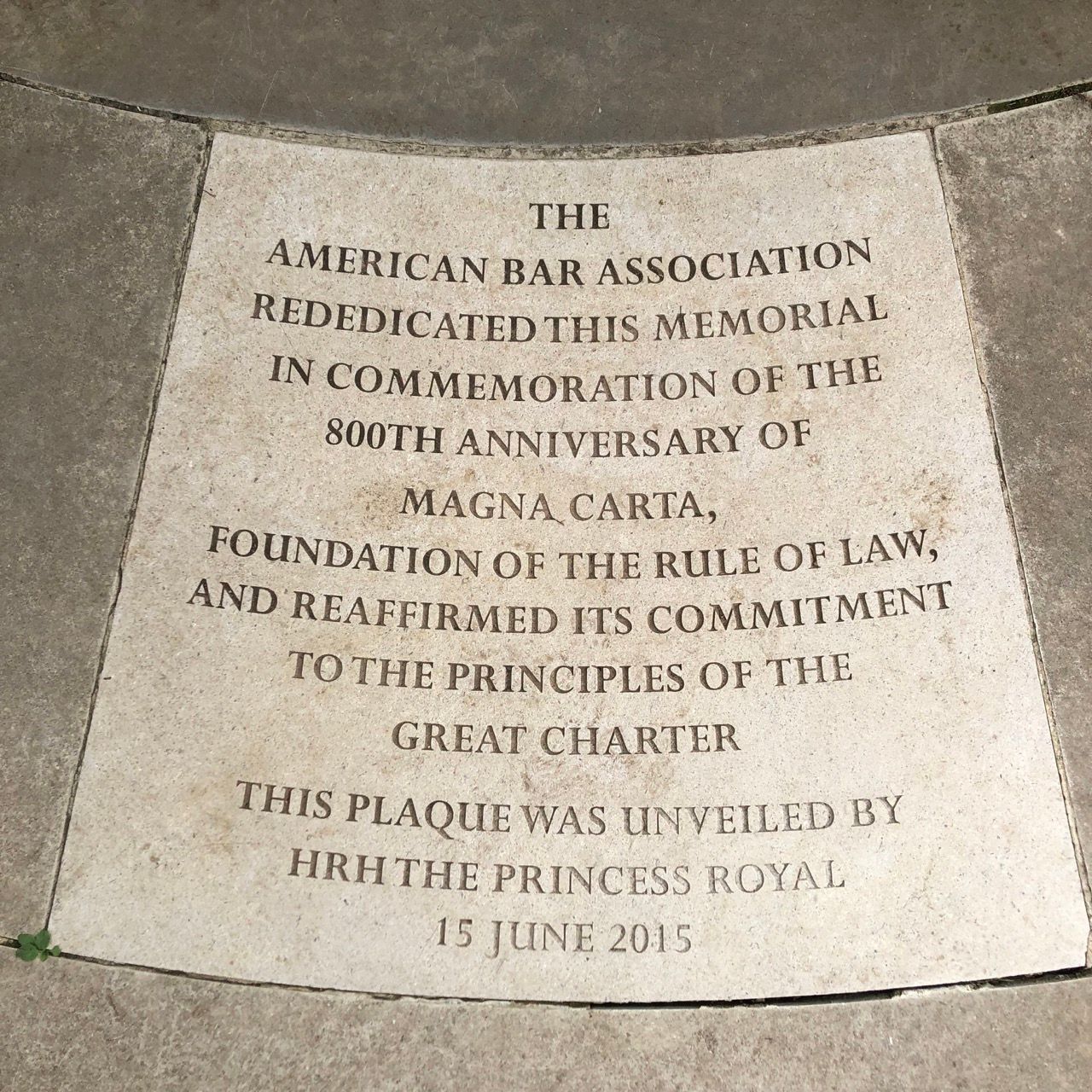
除了纪念《大宪章》外,Runnymede还有其他的纪念景点,如美国总统John F. Kennedy的纪念碑。
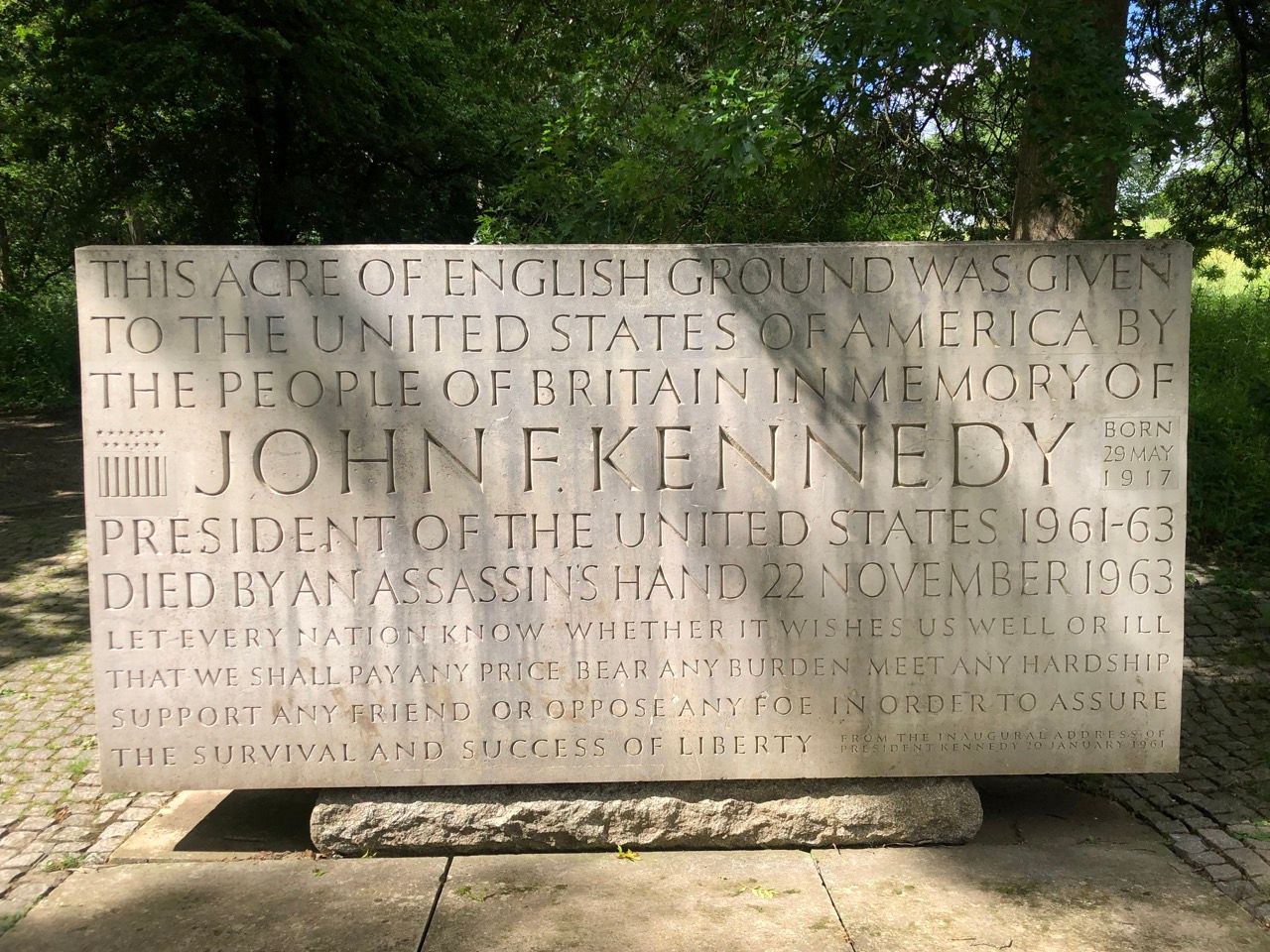
另外,Runnymede还有些与《大宪章》有关(纪念其价值、反思其意义等)的艺术品,如Writ in Water 。


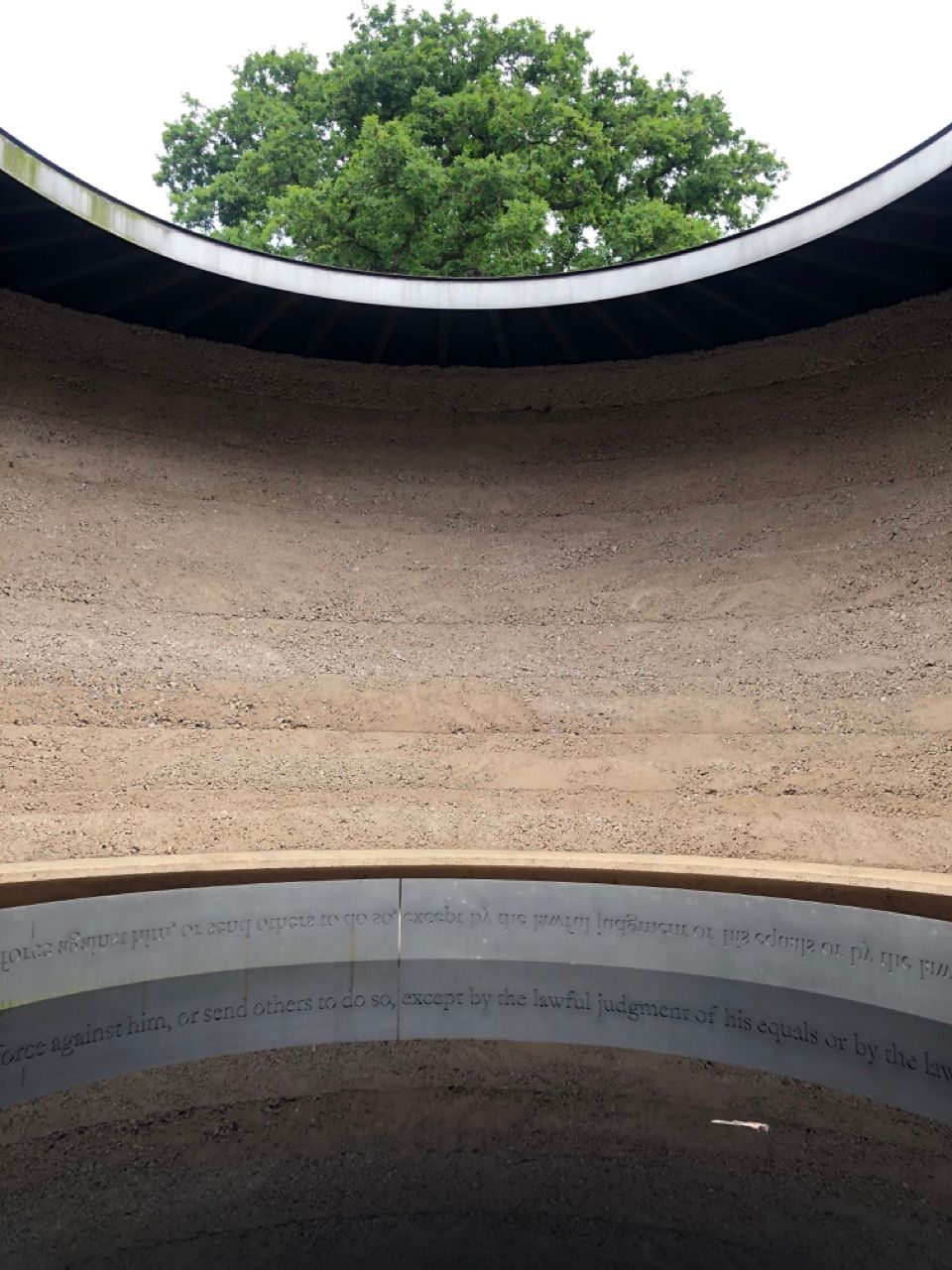
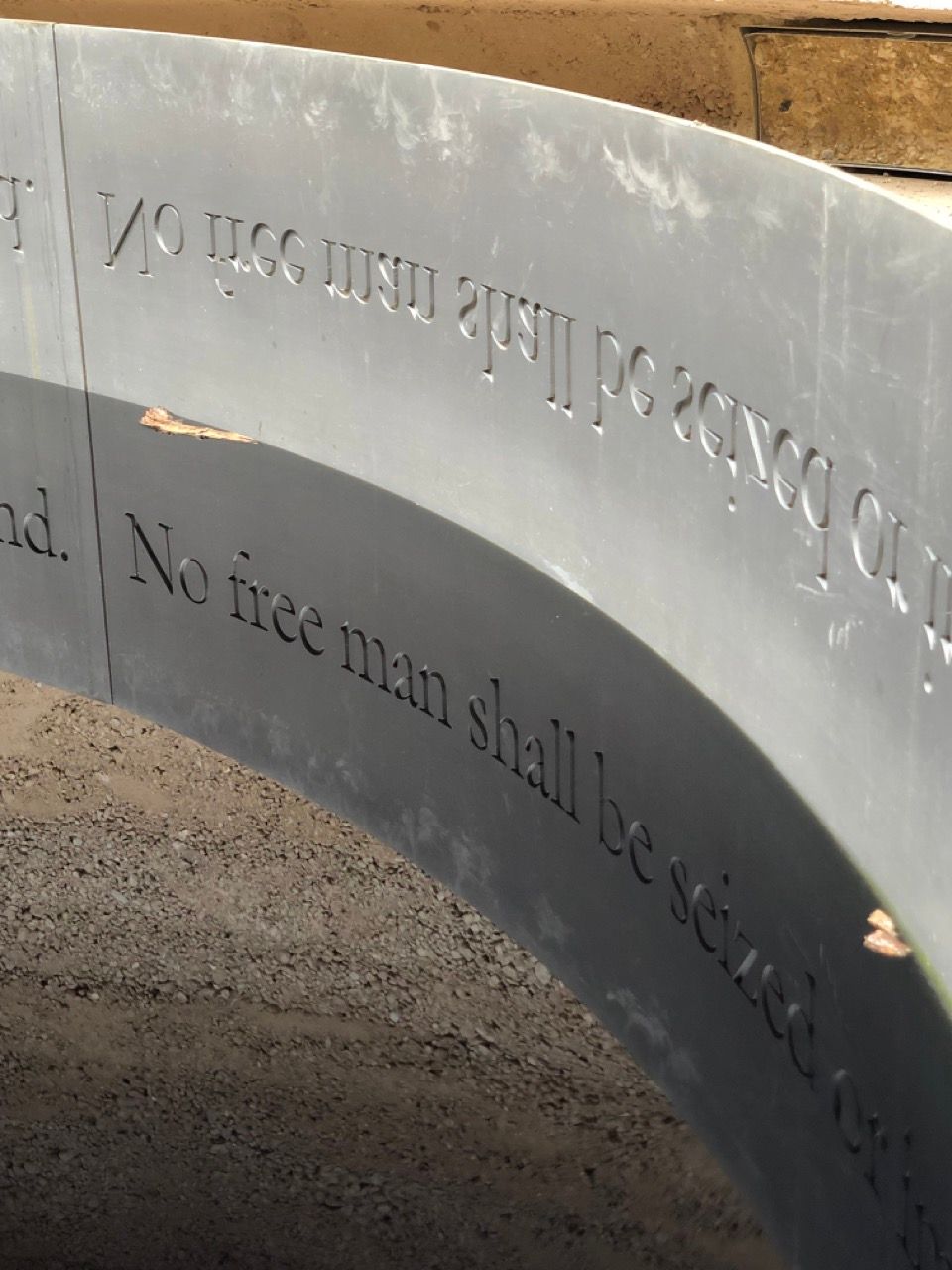
应该不难看到水面反射出正常文字写法的特色。那些文字其实就是上面提到过的《大宪章》Clause 39的完整版本:
No free man shall be seized or imprisoned, or stripped of his rights or possessions, or outlawed or exiled, or deprived of his standing in any way, nor will we proceed with force against him, or send others to do so, except by the lawful judgment of his equals or by the law of the land.
创作Writ in Water的艺术家,Mark Wallinger, 评论道:
In Writ in Water, the use of reflection to make the text legible plays against the idea of a law written in stone. Magna Carta curtailed this divine right and issued the first secular writ.
Keats though despairing of his legacy was to become one of the immortals and his words live anew when learnt and repeated by every succeeding generation. Similarly, although Magna Carta established the law and the nascent principles of human rights, the United Kingdom has no written constitution. What seems like a birthright has to be learned over and over and made sense of. Whether the words are ephemeral or everlasting is up to us.
在2015年庆祝《大宪章》面世800周年时,另一件艺术品,The Jurors,被建构在Runnymede的草地上。
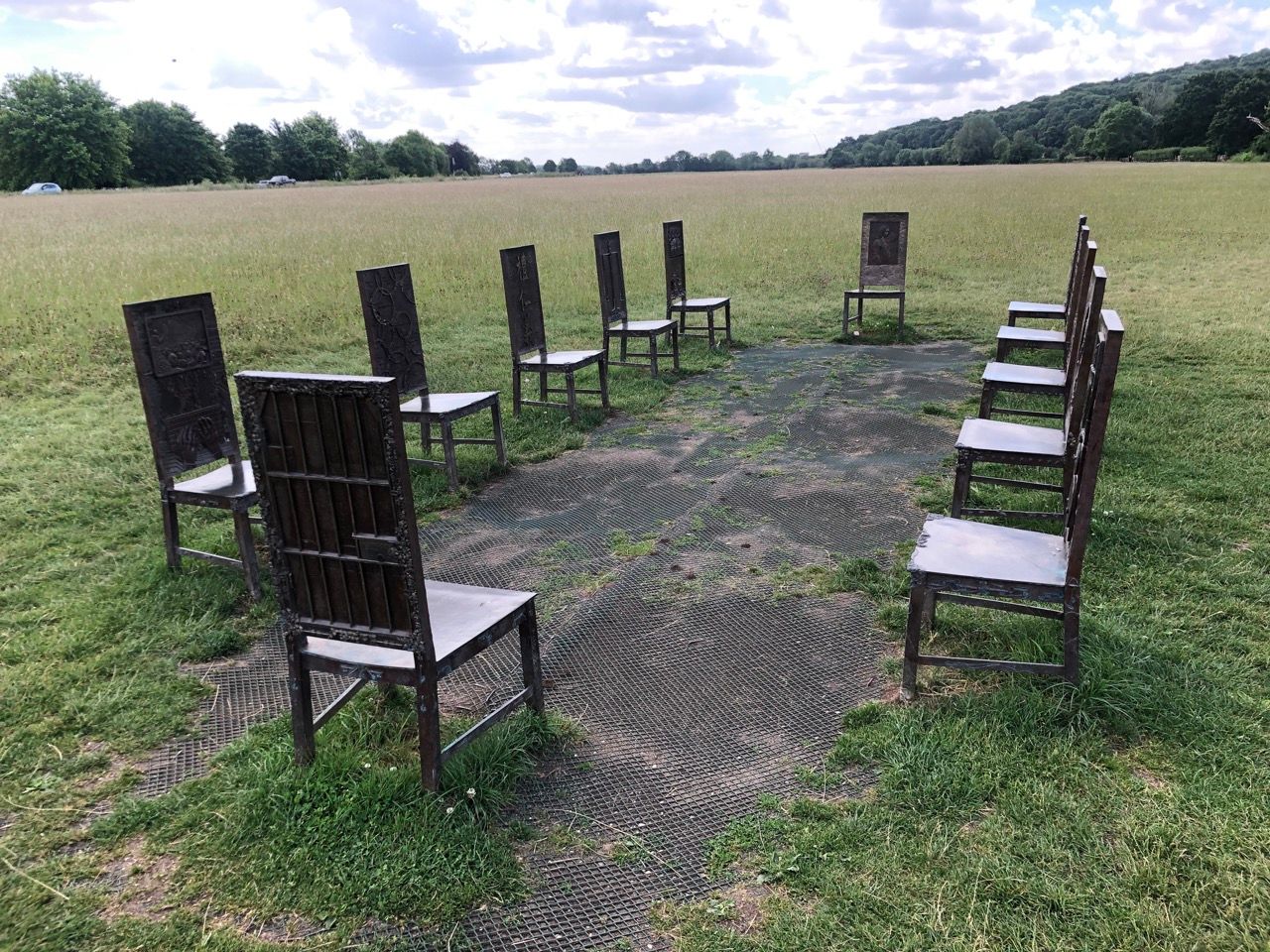
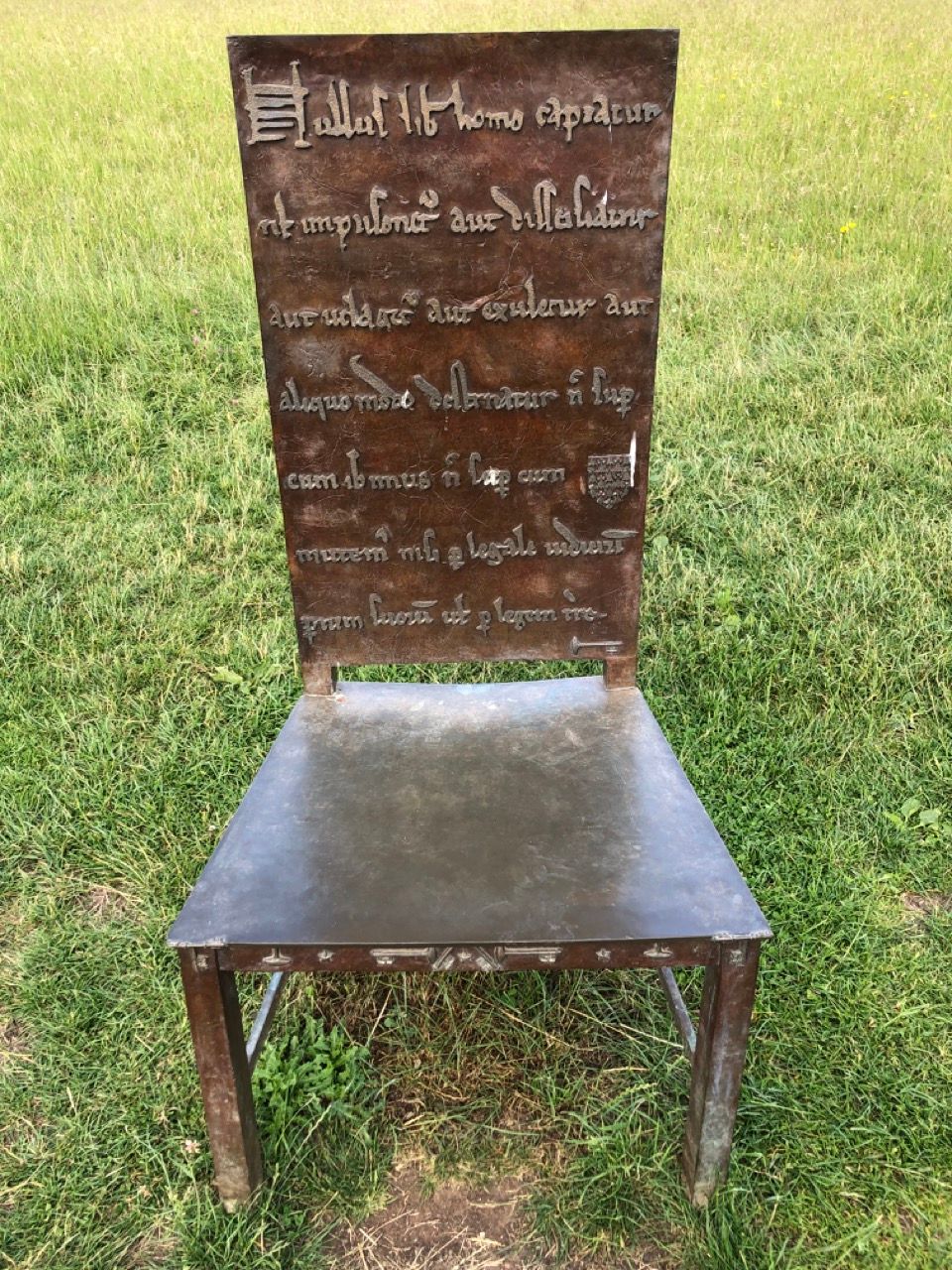
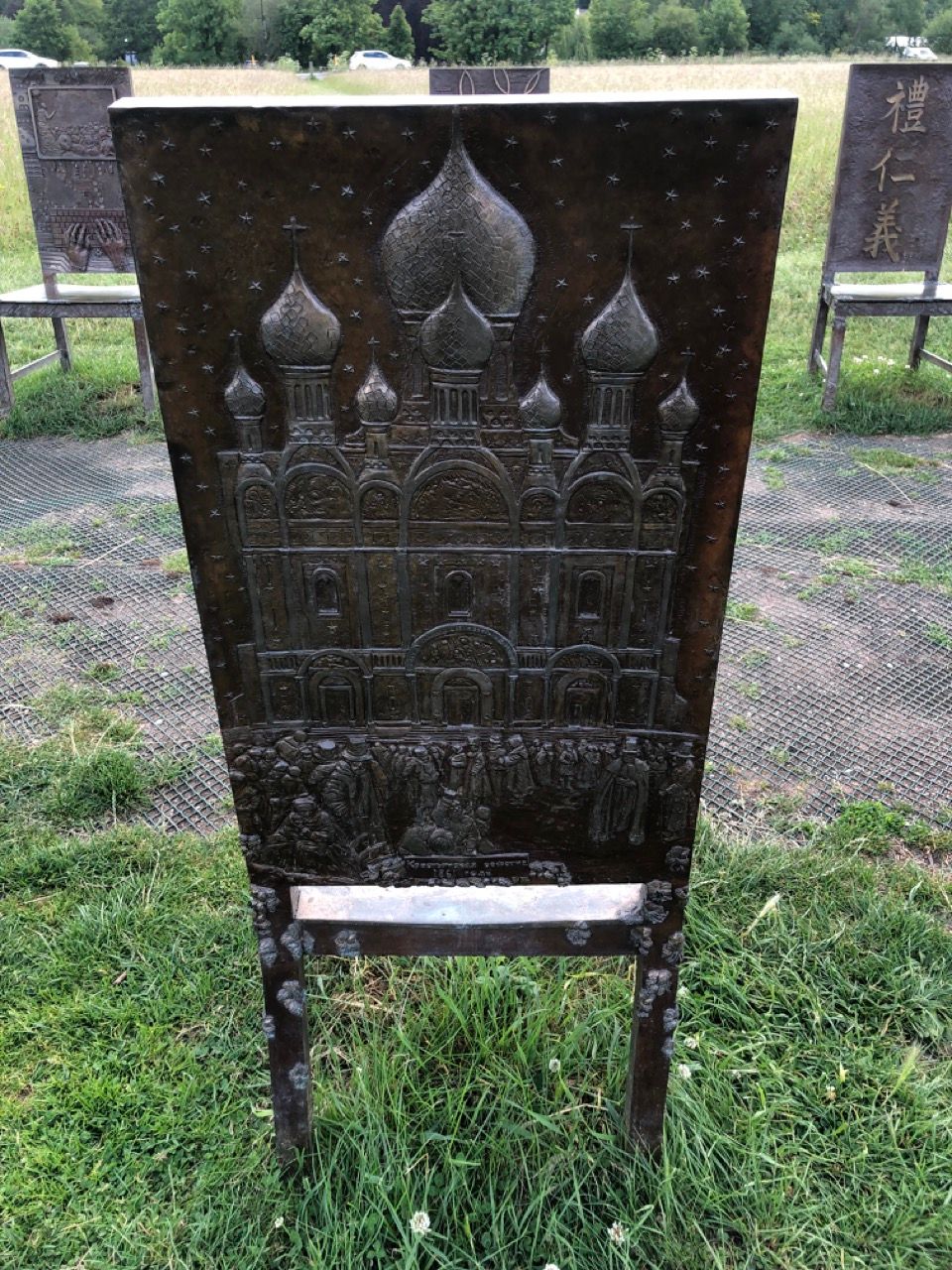
12张金属椅子,以上面形式排列,每张上面有特别的图像或文字,皆与争取自由、公义等的理念有关;详细解说可参考此网站。
Ankerwycke是与Runnymede隔着泰晤士河的对岸地方(那里泰晤士河很窄),那边有一位见证《大宪章》封印的「老人家」,仍然在生,而当年此老人家已经极老,因为,那时——超过800年前——已经约1700岁了!
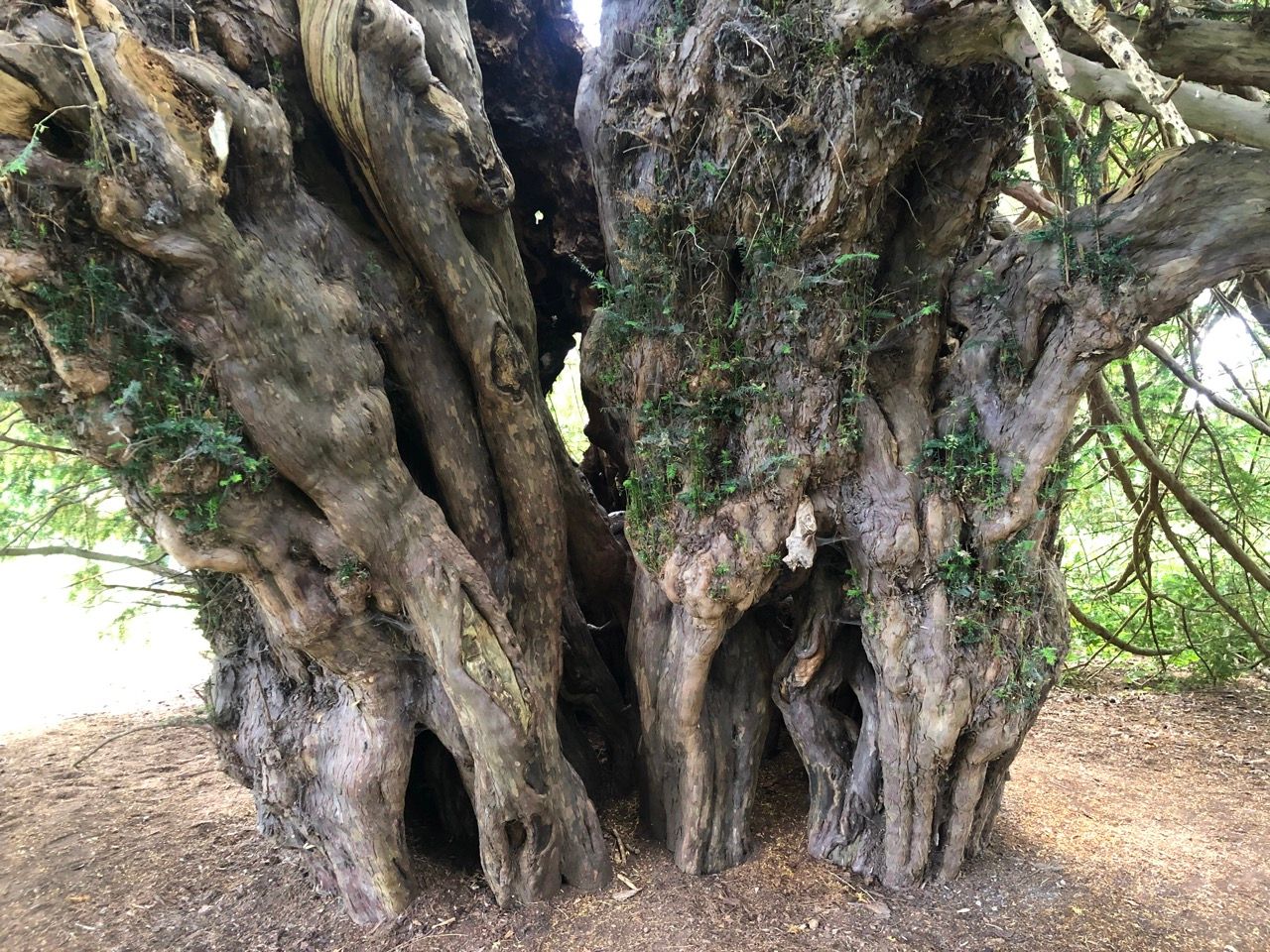
就是这棵古树, The Ankerwycke Yew 。不知是否有关当局刻意安排,这位老人家旁边站了一位后生仔。
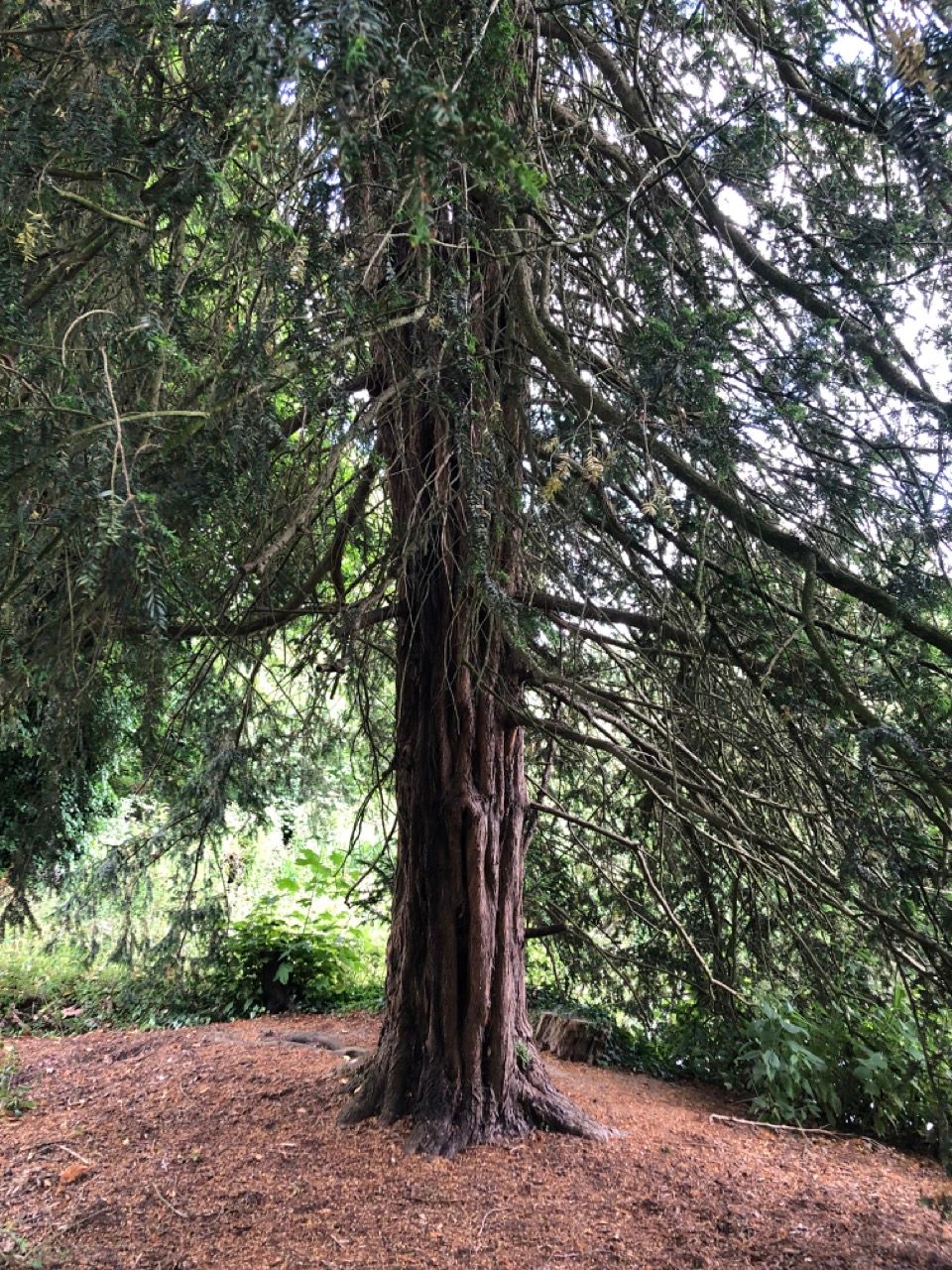
根据我自己的观察——主要看树叶,我断定老人家和后生仔是同一品种的树;所以,对比一下两者的树干,便会领悟到,老人家真的很老了!
喜欢我的作品吗?别忘了给予支持与赞赏,让我知道在创作的路上有你陪伴,一起延续这份热忱!

- 来自作者
- 相关推荐